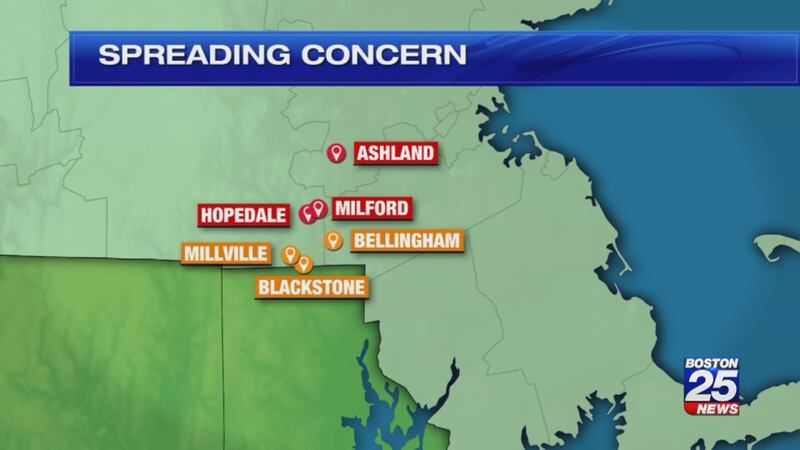MIDDLESEX COUNTY, Mass. — A man in his 70s from southwestern Middlesex County has become the state's fifth case of a rare and potentially deadly virus, according to the Department of Public Health.
A South Coast woman died of the rare, mosquito-borne virus Eastern Equine Encephalitis (EEE) last month.
The state's Department of Public Health has now confirmed a fifth person has been diagnosed with EEE in Commonwealth.
In total, there are 32 communities now at critical risk, 39 at high risk, and 121 at moderate risk for the EEE virus in Massachusetts. Ashland, Hopedale and Milford had their risk level raised to critical following the man's diagnosis while Bellingham, Blackstone and Millville are now part of the high-risk area.
The Department of Public Health identified the fourth victim diagnosed with the virus as a woman over 50 from southern Bristol County. Many communities in southeastern Massachusetts are on alert for EEE.
According to the DPH, the virus has been found in 333 mosquito samples this year, many of which are able to spread the virus to humans.
The first case of EEE confirmed in a human this year came in early August when a man over 60 years old from Plymouth County was diagnosed. A second person was also diagnosed in Grafton earlier in August while a third person in Franklin County was diagnosed with EEE last week.
The Massachusetts Department of Public Health is performing aerial spraying for mosquitoes in communities considered high risk for EEE.
Related: How is the threat of EEE impacting local school sports?
Everyone is being urged to follow the five D's of mosquito control:
- Dusk - Avoid outdoor activity when mosquitos are most active
- Dawn - Don't go outside when the light is changing in the sky
- DEET - Use repellents containing it
- Dress - Cover exposed skin to block mosquitoes
- Drain - Dump standing water so mosquitoes can't breed
State health officials say the peak time to get bitten by an infected mosquito extends through September here in Massachusetts. The risk continues through the first hard frost, which, on average, is more than a month away.
Cox Media Group








